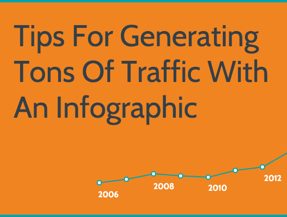4 Tips For Generating Tons Of Traffic With An Infographic
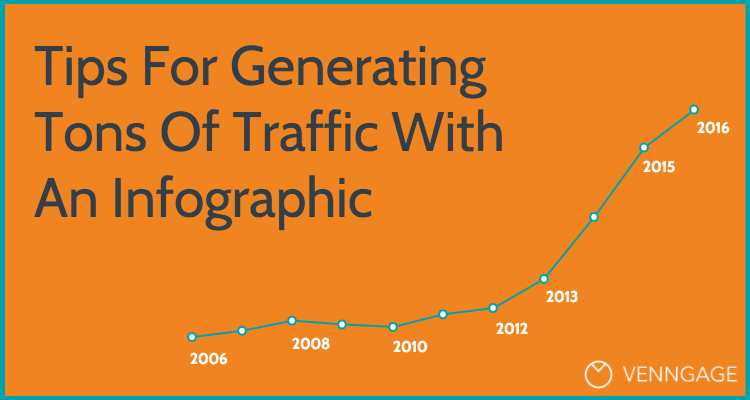
The fundamental purpose that an infographic serves to many content marketers is to generate traffic.
Unfortunately, most infographics that are created fail to peak the interest of the general public, thus failing to generate a decent level of social activity, and as a result, any form of traffic to your site.
So how does one remedy this unfortunate situation?
Well, first of all, you need to understand how to create an infographic that caters to the interests of a wide audience, but at the same time, is still relevant to your niche.
The information that you include in your infographic has to be absolutely groundbreaking…or, at least, appear to be.
How often do we come across groundbreaking information before anyone else, though? It rarely happens. So how can you be expected to consistently produce content that does just that?
It comes down to how well you can marry two ideas together, and produce a completely new perspective for something that already exists.
1. BRAINSTORMING POSSIBLE INFOGRAPHIC TOPICS
I know.
It seems a little bit confusing, and quite frankly a little bit vague, but let me explain.
As the Director of Marketing for Venngage, I come across a lot of infographics. Most are good, many are bad and some are simply outstanding.
What makes the great ones really stand out is how innovative the content is.
Everyone always wants original and unique content. I contribute to almost 30 different blogs and publications and the main concern is always: Is this content original?
If you’ve ever guest-blogged for someone, you quickly get a sense of this. No one wants anything that has already been done — that’s just ridiculous.
As a result, you need to create something completely original, but a quick Google search will tell you that what might seem like a new and innovative idea has already been conceived by thousands of other people.
So what do you do?
You write it anyway!
But you put a different spin on it.
Perhaps you refer to a personal case study that provides more useful insight to the topic at hand or analyze how another company successfully handled the same challenge you are facing.
The point is, you take an idea that people are talking about and researching, and you provide a new perspective on that idea.
2. RESEARCH WELL-DONE INFOGRAPHICS
Before you even begin thinking about the infographic you want to make, take a look at who has already successfully created one (or more) that has already received lots of attention.
Make a list of those individuals and analyze what they have done right.
Let’s take a look at infographics from three very different sources:
1. Neil Patel states that the most popular infographics on social media have three elements in common. Those elements are: a consistent method, a unique story and trusted statistical data.
2. The National Geographic has a consistent design element to them. They are all highly illustrative, detailed and/or data oriented. Many are specific in their narrative and focus on one particular species of fish, or style of architecture, for instance.
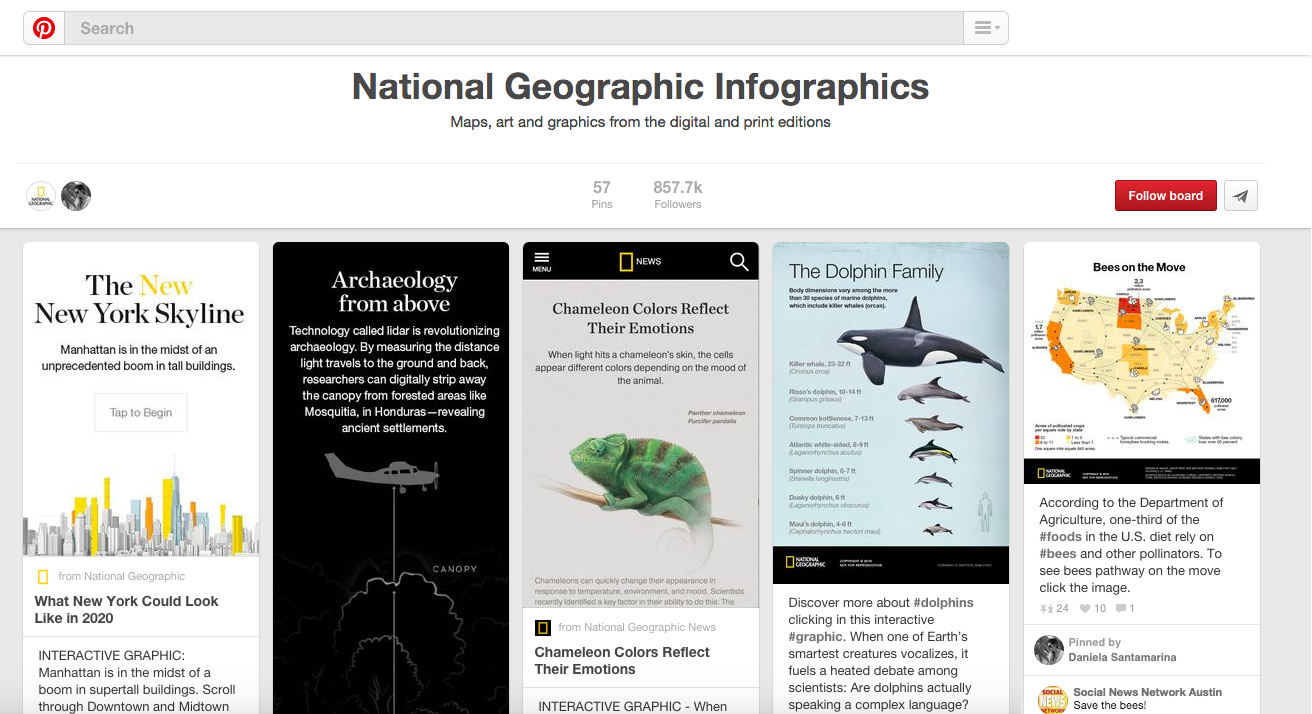
3. Venngage focuses on original research and pulling from two or more themes that can be mirrored to each other and then visualized. For instance, the post and infographic that were done on the design principles in Star Wars carefully analyzed a topic that many people are fans of (Star Wars) and another that many others practice (graphic design). Thus, this post catered to the interests of two unique audiences and personas.
3. CHOOSE AN ORIGINAL TOPIC FOR YOUR INFOGRAPHIC
Once you have assessed the methods of some top-performing infographic creators, the next step is coming up with a topic for your own infographic, and a method for designing it and then promoting it.
Many people will probably tell you to choose a topic that has evergreen potential, over one that is a current trend.
I think that’s terrible advice.
Rather, what you should aim to do is produce evergreen content that has a trending touch.
For example:
Infographic design principles (Evergreen) meets Star Wars (Trending because of “The Force Awakens”).
Even once the Star Wars movie loses its initial hype, the relevance of the design principles from the infographic still apply.
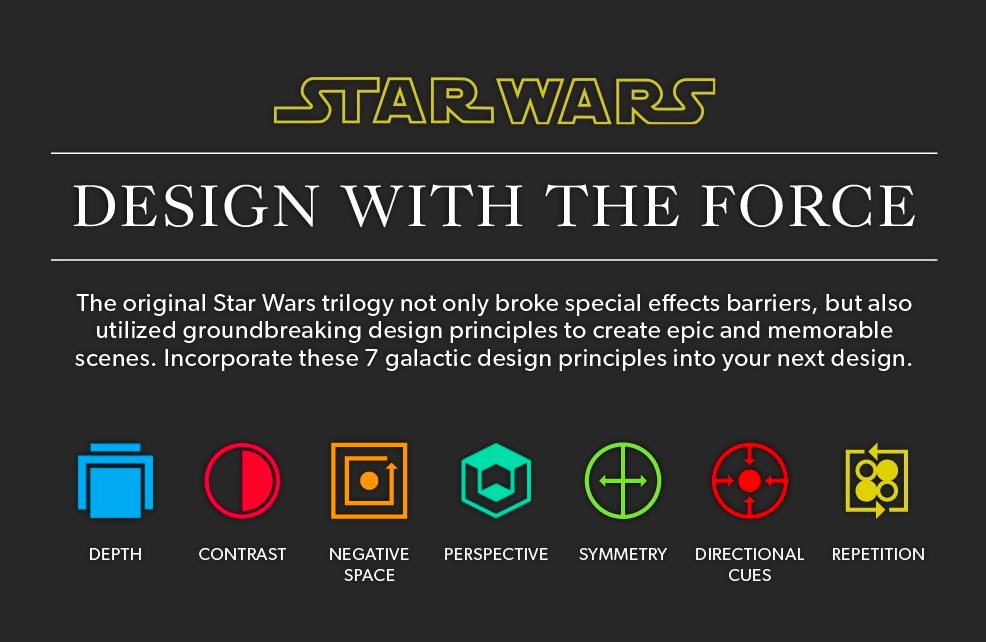
See full infographic
Here’s another example from AAAStateofPlay.
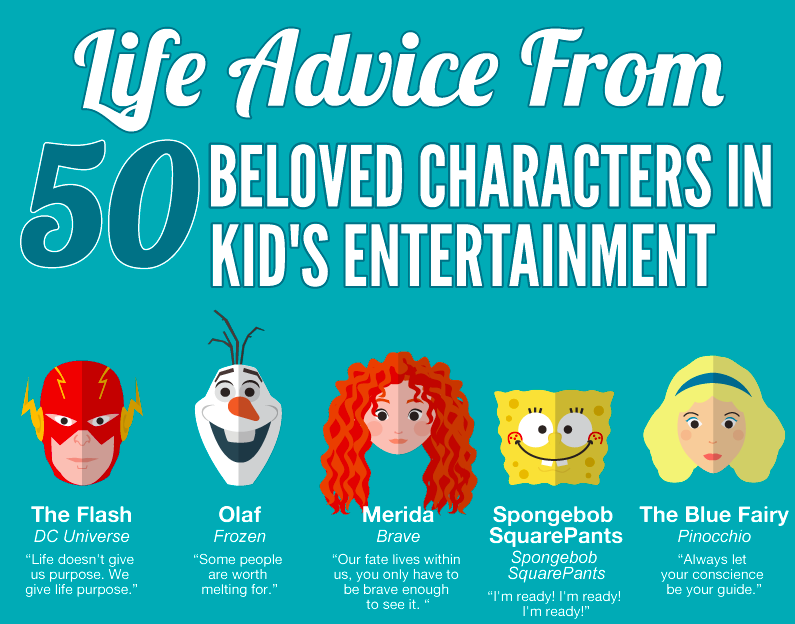
See full infographic
They created a simple infographic of life lessons as told from your favorite childhood characters.
The lessons that are taught are evergreen since they are relevant in most aspects of life, but all of the characters represent trends over time (Elsa from Frozen might be considered the current trend, for instance).
This infographic received over 14,000 views on Visual.ly, so there is no doubt that it was well-received and generated lots of traffic.
Just because a company focuses on graphic design principles, for instance, does not mean it must only reference more obvious graphic design practices.
Case studies and examples that sometimes fall out of the typical realm of computer graphic design can provide a lot of insight that can evolve stylistic choices and take them to newer and higher levels of innovation.
One of the best performing infographics on the web to date is, “What does your handwriting say about you?” by National Pen.
How badly do you want to view the whole infographic by simply seeing the title header? You’re probably itching to read it.

See full infographic
Why?
Aside from the thematic and playful design of the infographic, the content itself crosses between the topics of writing aesthetics and psychology.
Furthermore, the infographic attempts to tell the reader something about themselves that they didn’t know. People love being self-validated. The phenomenon is called the self-verification theory and explains why we always want to learn more about ourselves from other people or sources (despite their accuracy or credibility).
This is a good tactic to keep in mind when practicing the art of infographic innovation.
The combination of two distinct elements and how they relate to one another is what will differentiate your infographic from the rest.
What is more interesting: an infographic about different writing styles, or one about how your writing style sets you apart from the rest of society?
4. PROMOTING YOUR INFOGRAPHIC:
Finally, once you have created the perfect infographic, your next task is to ensure that the right people are seeing it.
This requires a combination of social media outreach, influencer outreach, guest blogging and infographic submission:
Write a blog post to accompany your infographic
I’ve mentioned it already, but it is absolutely necessary that you have an article or blog post to accompany your infographic.
The point of your infographic, after all, is to simplify a complex concept, so your blog post should expand on the concept at hand.
This should be placed on your own blog.
Promote your infographic on social media
Now that the infographic and article are on your site, promote them on social media, ensuring that all links come back to your site.
Outreach to influencers
Find and outreach to marketers and influencers who might find the content in your infographic useful and interesting.
Brian Dean of Backlinko suggests using a tactic like the skyscraper technique to find the appropriate niche influencers.
Guest blog to sites with a high domain authority
If you are a contributor to various blogs that have a high domain authority, you can repurpose your infographic to those sites and link back to your original article for SEO value.
Submit your infographic to different sites
Visual.ly: Companies like FastCompany, Huffington Post and Business Insider refer to Visual.ly to find interesting infographics that they can include in blog posts. If your infographic is good, Visual.ly will mark it as a Staff Pick, increasing its chances of being seen and picked up by other blogs and publications
Visualistan: This is another infographic curation site that accepts infographic submissions. Again, many marketers use this as a resource for finding infographics that relate specifically to social media, technology, business, and marketing.
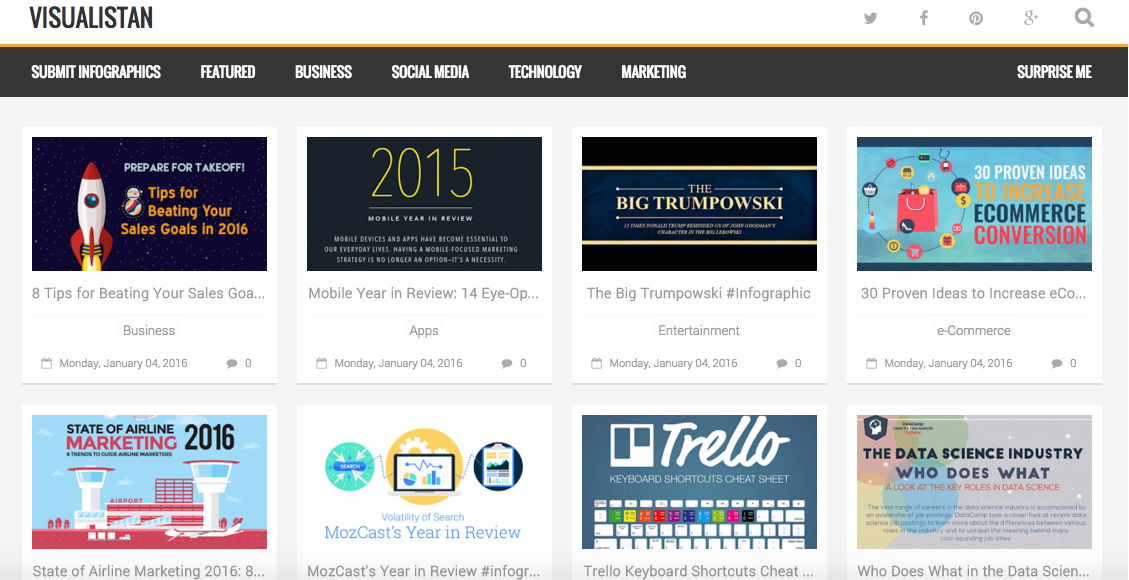
Killer Infographics: You can submit infographics to Killer Infographics as well. They cover a very wide range of infographic topics including food and drink, pop culture and technology.
Other sites include News I Like, Media Caffeine, and Daily Infographic.
Conclusion
In time, you will boost your SEO and push your content to the top of Google. As a result, you will gain more organic traffic and more people linking back to, as well as sharing your content.
The wider the range of content you create, and the better you promote it, the more you increase your chances of ranking on longtail keywords and boosting your traffic that way.
Remember, the trick is to create an infographic that is evergreen content and trending so that the theme is timely, but the ideas last forever.
Before you begin your creation process, ask yourself this: is the content you are producing going to provide practical value to your audience, and will it do so in a way that excites them?
